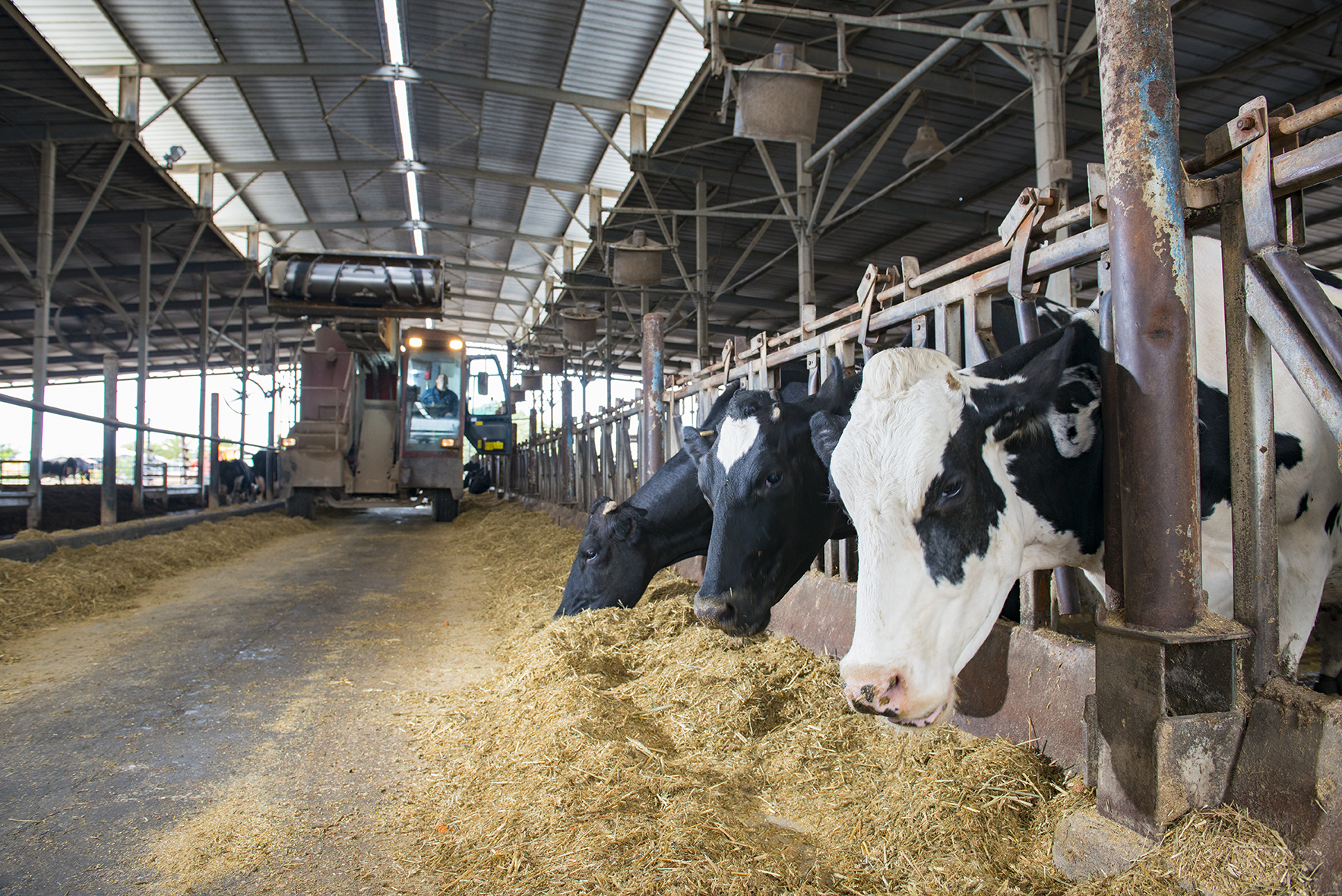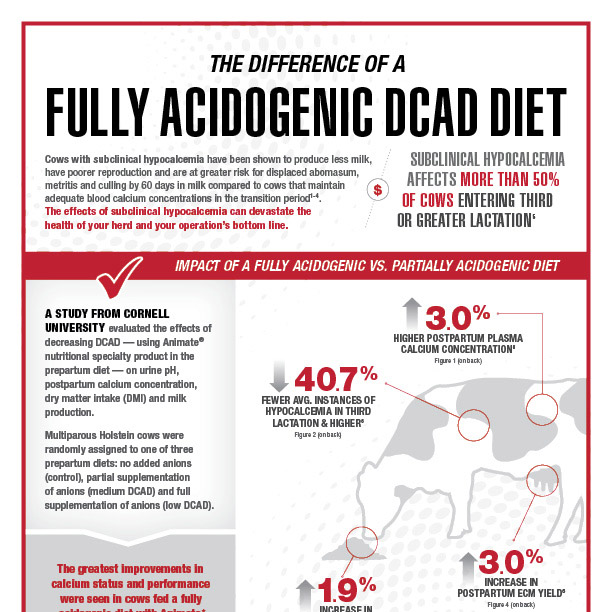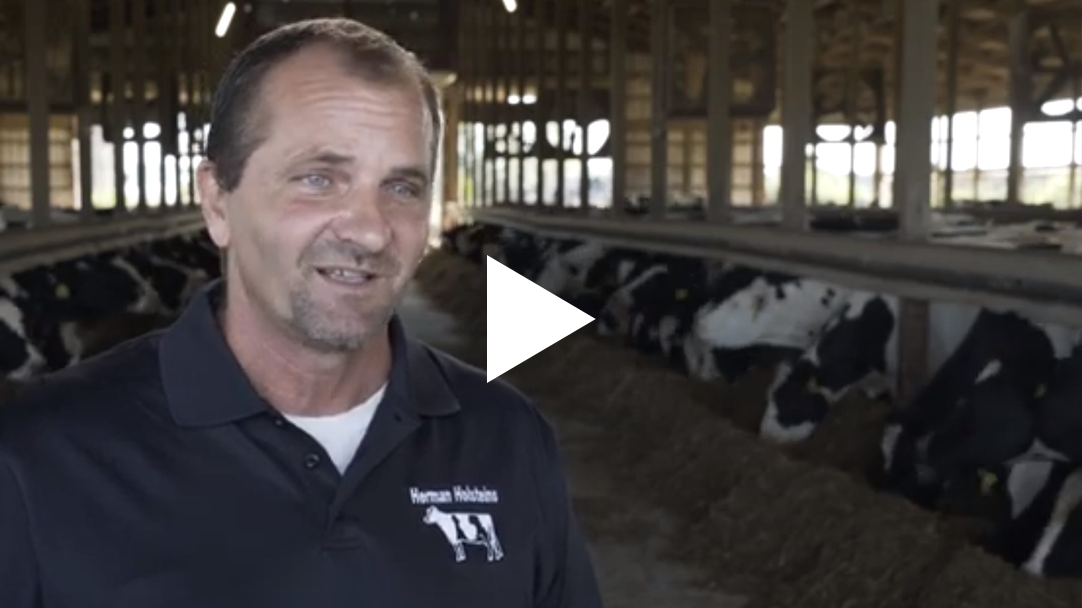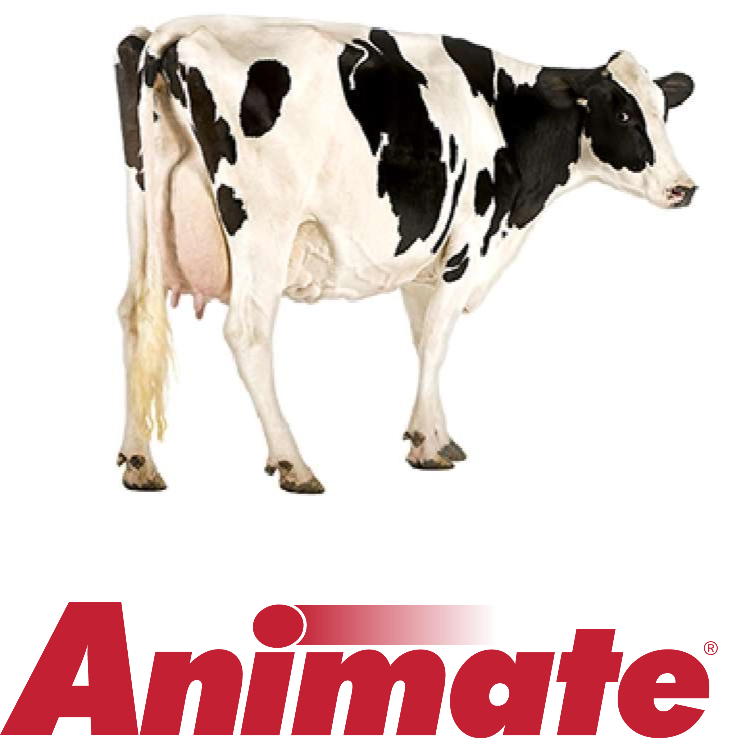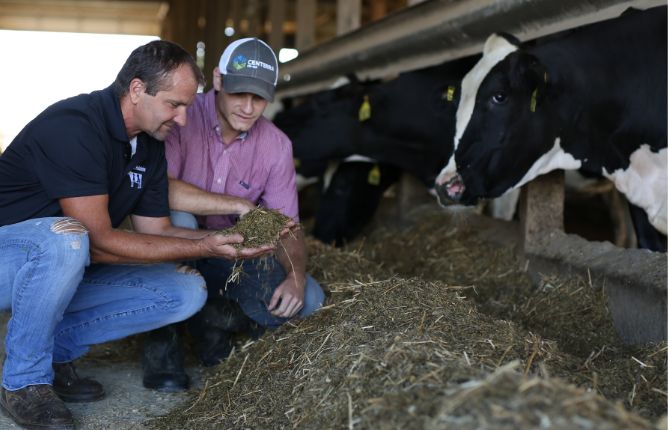
by Ken Zanzalari, Ph.D., Dipl. ACAN, Phibro Animal Health
Over the past decade, there’s been a lot of research and discussion about the importance of managing periparturient dairy cows to reduce the incidence of hypocalcemia. Some work substantiated what we already knew, other work expanded our foundation of understanding and some work investigated newer strategies. From all these studies, several key points of understanding were gained.
- Hypocalcemia, both the clinical milk fever and subclinical forms of the disorder, has negative consequences for the cow, such as greater incidence of other health related disorders, extra treatment costs, lower fertility, a significant reduction in milk yield, and, for the dairy owner, less profit per cow.
- The time-course recovery to normal serum calcium status following calving is more important than a single time point evaluation.
- There is no strategy that results in zero incidences of hypocalcemia but some feeding strategies pay a better return on investment than others.
- Feeding an acidogenic diet (also known as a negative DCAD diet) helps to optimize calcium metabolism (via PTH and Vitamin D) prior to calving, which may help reduce the incidence of hypocalcemia, resulting in the best outcomes for the cow and dairy owner.
A Trusted Approach
While there are still some varying opinions as how best to formulate an acidogenic diet (level of DCAD; dietary level of calcium and phosphorus), one thing is certain: feeding an acidogenic diet is by far the most research proven strategy to help improve the postpartum calcium status in cows and the one most implemented on today’s dairy farms, and for a good reason.
Feeding an acidogenic diet to prepartum dairy cows results in positive impacts on calcium metabolism, which can result in greater dietary calcium absorption by intestinal tissue and release of calcium from bone, providing more “available” calcium to the cow. In other words, working with the cow’s primary mechanisms of calcium regulation for maintaining normal blood calcium concentrations.
Research has shown that feeding an acidogenic diet to prepartum dairy cows can lead to:
- Lower instances of hypocalcemia.1
- No impact, or a small decrease, in prepartum dry matter intake, dependent on the anion source and level.1,2
- Improved postpartum dry matter intakes, enabling the cow to meet the increased nutrient requirements for milk synthesis.1,2
- Improved reproductive performance.3
- Increased milk yield, making the cow more efficient and dairy producers more profitable.1
A Closer Look at a New Strategy
A new strategy takes a different approach using phosphorus regulation, not calcium regulation, to raise blood calcium concentrations. This strategy relies on feeding a phosphorus deficient diet, either through feeding phosphorus below dietary requirement or by the addition of a phosphorus binding agent, to induce resorption of phosphorus from bone. Since phosphorus and calcium are bound together to form the matrix of bone tissue, the breakdown of bone tissue releases both minerals into circulation.
While this strategy can support a short-term supply of calcium and help keep blood calcium concentrations high around calving, a closer look reveals why it is not the best approach to managing calcium status in periparturient cows.
As mentioned, feeding a phosphorus deficient diet raises blood calcium concentrations through a secondary mechanism. Studies have demonstrated that this strategy results in below normal blood (0.95 mmol/L) and salivary phosphorus (5.53 mmol/L) concentrations.4 Once the rapidly available pool of phosphorus from blood and saliva is depleted, the cow must mobilize bone to reverse the severe phosphorus deficiency, replete blood and salivary concentrations, and meet the need for phosphorus deposition into milk.
Research has shown that feeding a prepartum diet deficient in phosphorus can result in:
- Elevated blood calcium concentrations, when compared to cows fed no prepartum hypocalcemia prevention program.4,5
- Significant decreases in prepartum dry matter intake,4 with intake depression becoming more apparent as the cow approaches calving (16 to 20% decrease in the last week before calving).6
- Significant decrease in prepartum rumination activity, over 40 minutes per day lower than cows fed a non acidogenic and acidogenic prepartum diet.7
- No effect (no benefit) on milk production.5,6,7
As the competitive pressures to produce milk more inexpensively increase and place greater demands on dairy farm economic performance, using proven technologies that result in a return on investment is critical. Outside of milk production, no other measured and monitored cow health or performance indicator influenced by dietary nutrient intake is more scrutinized than measures of hypocalcemia (both clinical and subclinical). Like with all decisions, many factors need to be considered. However, when research and farm-tested strategies that also provide a return on investment are available, the choice is simple: feed the strategy that does more.
1 Leno et al., 2017. J Dairy Sci. 100:4604.
2 Glosson et al., 2020. J Dairy Sci. 103:7039.
3 Ryan et al., 2020. Theriogenology. 142:338.
4 Frizzarini et al., 2024. J Dairy Sci. 107:5204.
5 Kerwin et al., 2019. J Dairy Sci. 102:5191.
6 Thilsing-Hansen et al., 2002. J Dairy Sci. 85:1855.
7 Frizzarini et al., 2024. J Dairy Sci. 107:5222.
AN063124GLB ©2024 Phibro Animal Health Corporation. Phibro, Phibro logo design and Healthy Animals. Healthy Food. Healthy World. are trademarks owned by or licensed to Phibro Animal Health Corporation or its affiliates.
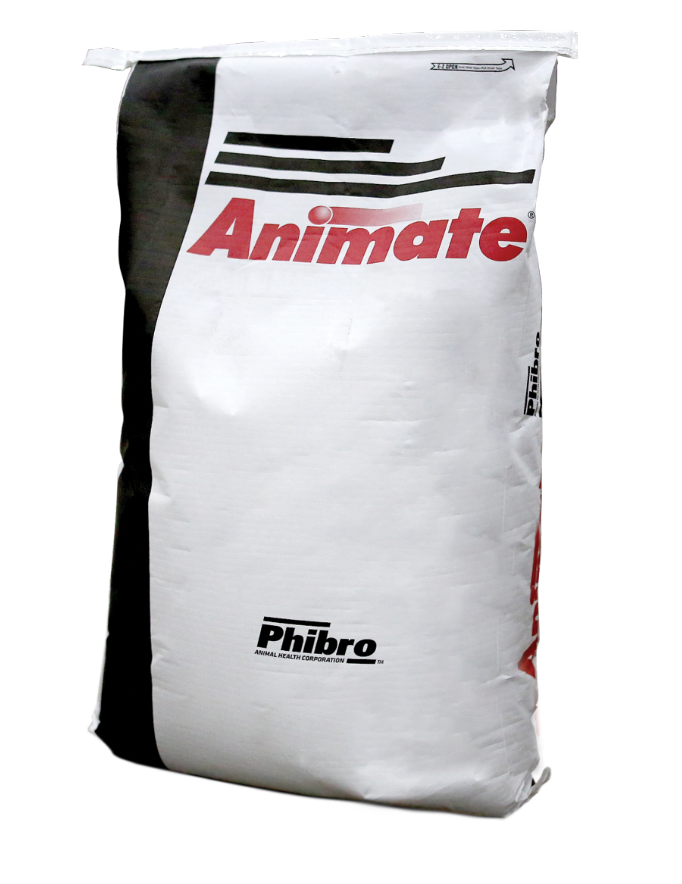
Start with the Right Anion Source
Animate® nutritional specialty product is a unique and patented anionic mineral that has been shown to help keep transition cows healthy and productive.
Learn about Animate







